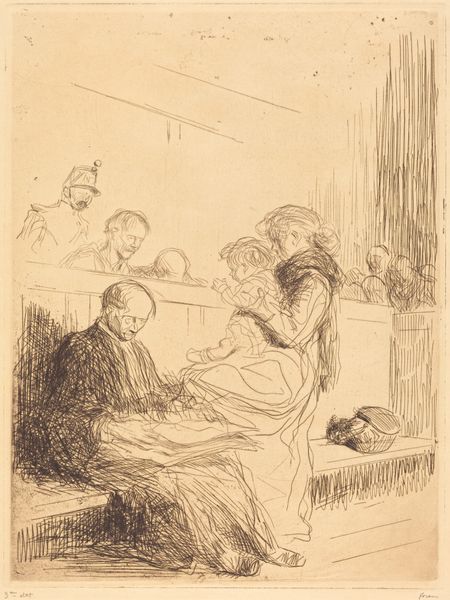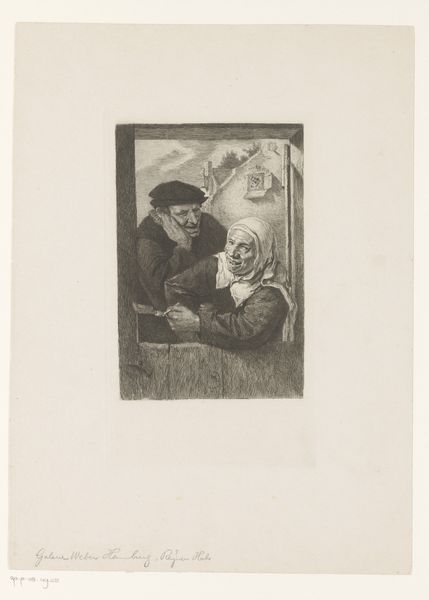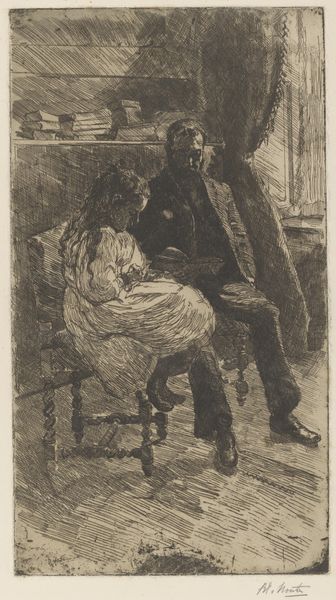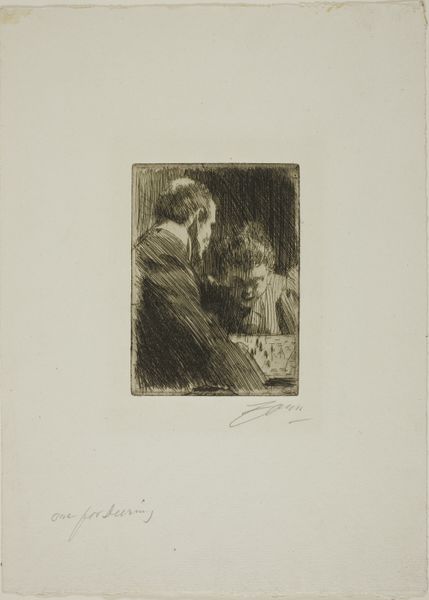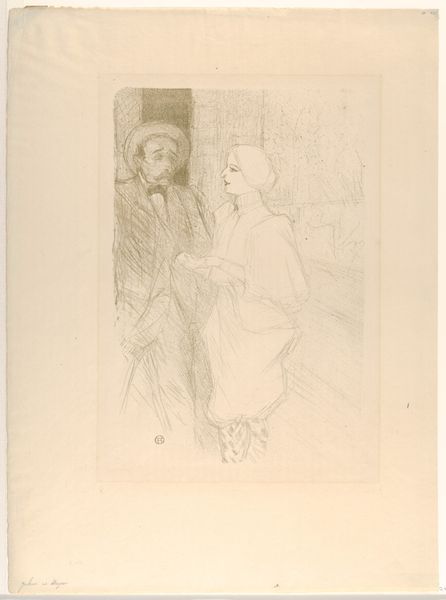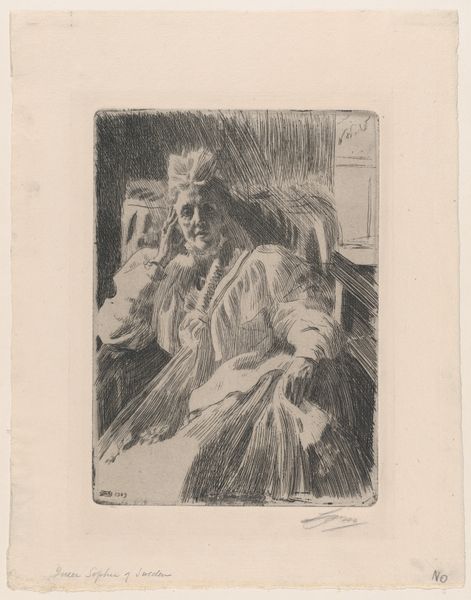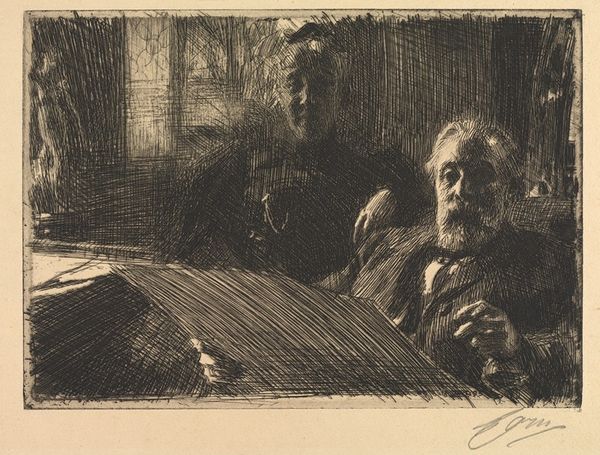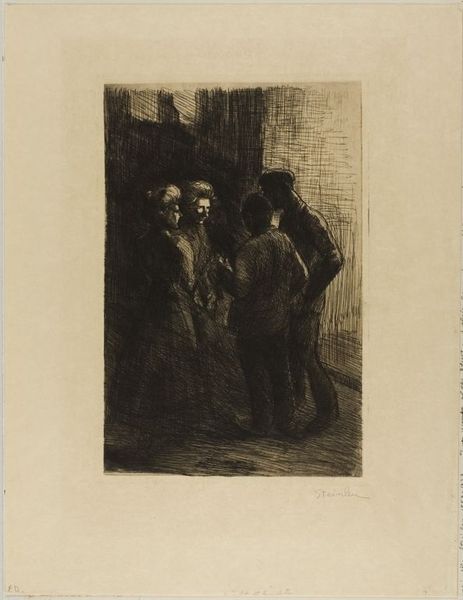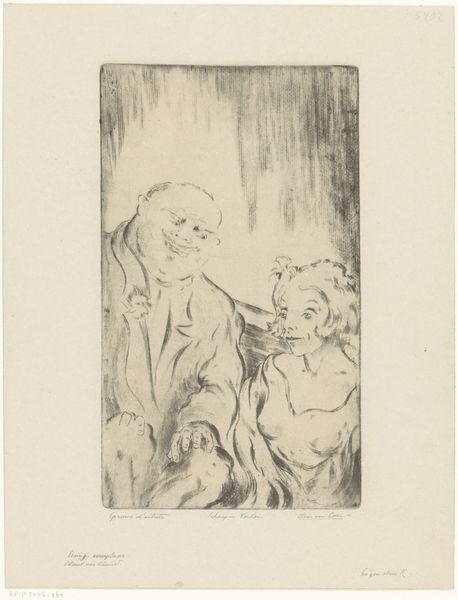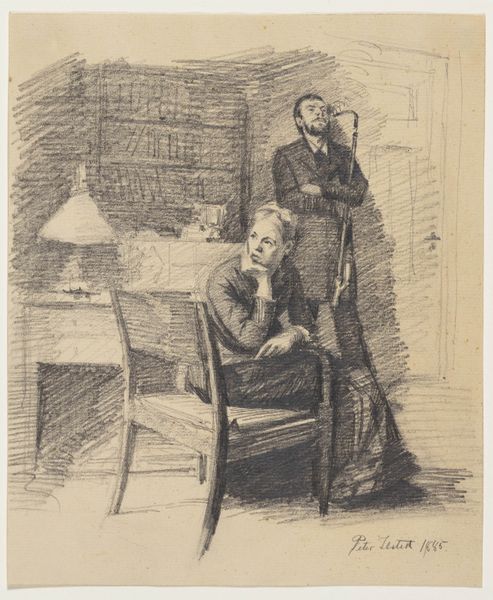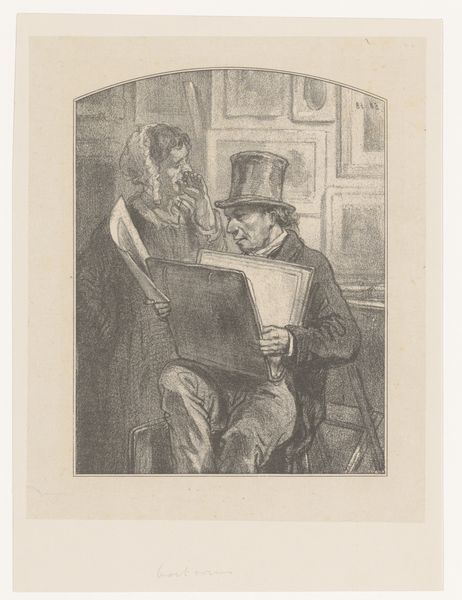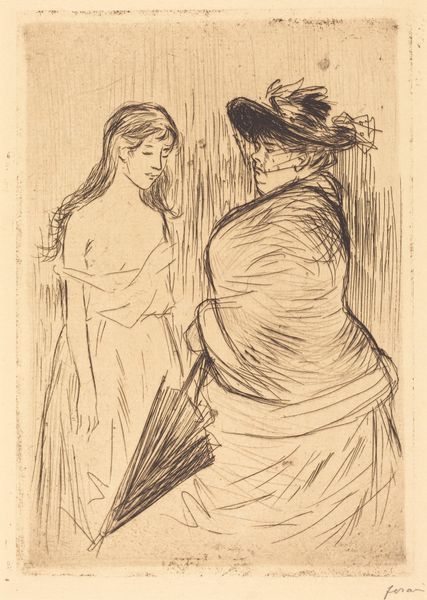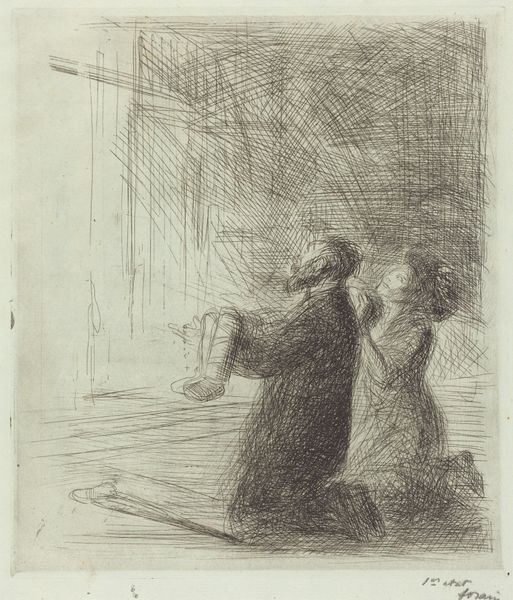
Pontus Fürstenberg and his Wife (standing near Hasselberg's "Frog") 1895
0:00
0:00
drawing, print, etching, paper
#
portrait
#
drawing
# print
#
etching
#
paper
#
genre-painting
Dimensions: 279 × 198 mm (image/plate); 365 × 280 mm (sheet)
Copyright: Public Domain
Curator: Welcome. Today we are looking at Anders Zorn’s etching on paper, titled “Pontus Fürstenberg and his Wife (standing near Hasselberg's "Frog")" dating from 1895. It’s held here at The Art Institute of Chicago. Editor: My first impression is of a hazy dreamscape, filled with characters caught in some undefined space. The stark black lines create a sense of intimacy, yet the whole scene feels detached, almost voyeuristic. Curator: Zorn employs dense hatching to define form and space. Consider the layering of lines; observe how the artist uses this method to construct the statue, a focal point of the composition and structural integrity. Editor: Absolutely, it's like everyone in the picture is simultaneously present and absent. But the frog sculpture, it’s so vivid despite being an etching, yet feels strangely alive and still. Curator: Indeed, and we see Zorn using the etching medium to create textural contrasts – note the smoothness of the face in opposition to the hatched rendering of the clothing, it emphasizes certain status elements through surface modulation. Editor: Zorn’s technique reminds me of a painterly approach, using lines as brushstrokes. There’s an ephemeral quality to the piece, as if it could dissipate into thin air at any moment. Curator: That ephemerality could reflect something of the art collector’s milieu and perhaps a comment on art patronage. Pontus Fürstenberg was indeed a patron. This work creates a dialogue between sitter, object, and patron within a complex semiotic exchange. Editor: Semiotic, really? Maybe. But it makes me think about the stories these images don't reveal; the unseen exchanges and social dynamics beneath the surface. Art patrons, always there. Curator: Undoubtedly the image presents a multi-layered representation of relationships mediated through art. Editor: I'll always appreciate how Zorn brings a flicker of life to something still. What else is it all for, right? Curator: Agreed, this composition is dynamic precisely because of its successful synthesis of stillness and vivacity through rigorous technique. Thank you for your insights!
Comments
No comments
Be the first to comment and join the conversation on the ultimate creative platform.
